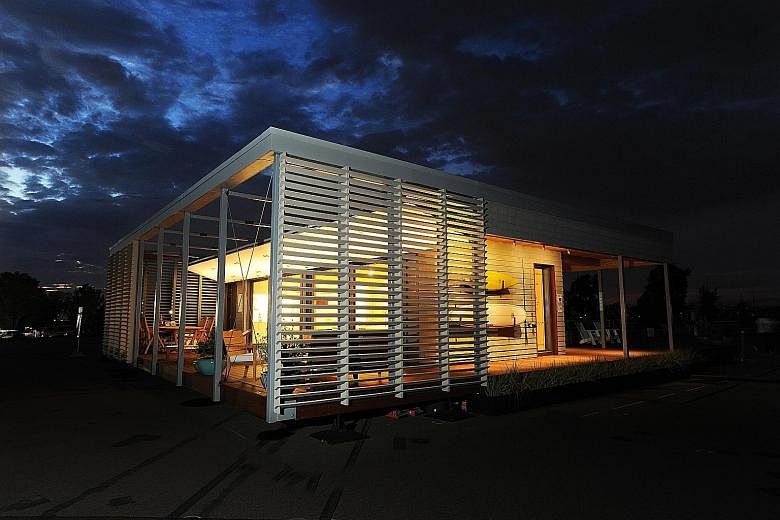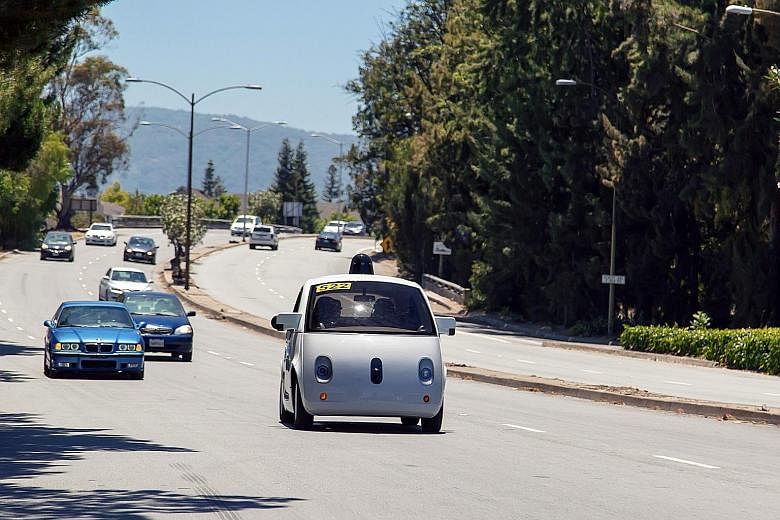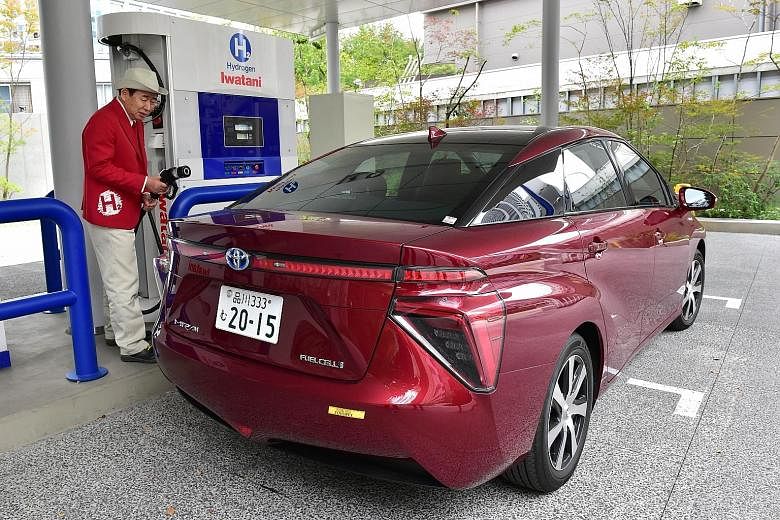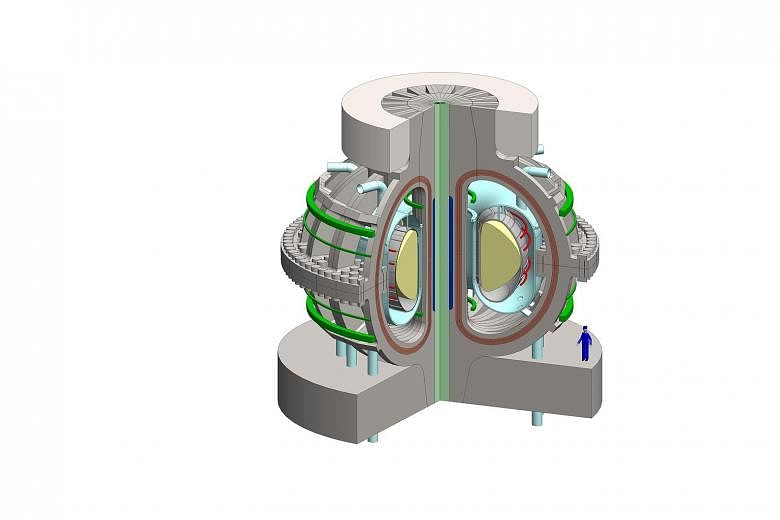A car that drives itself. A watch that remotely turns lights on or off. A home that produces power for neighbours during a blackout.
These three don't belong to a Jetsons-like future. They've already arrived. They're part of a new tech era in which scientists and entrepreneurs are rapidly trying bold ideas to save energy or provide cleaner alternatives.
Their discoveries could help countries meet the goals of last month's historic United Nations climate accord, aimed at slashing greenhouse gas emissions. Yet they still need public acceptance, lawmakers' approval and enough funding to avoid innovation's often-cited "valleys of death".
"We're problem solvers here, so there's nothing like a great challenge," says Professor Robert Armstrong, director of the Massachusetts Institute of Technology's (MIT) Energy Initiative. He says MIT has taken on climate change as a "priority", involving thousands of students, a third of the faculty and more than 40 start-ups.
Other universities and national laboratories are also stepping up. They'll get help from a new billionaires' club, the Breakthrough Energy Coalition, that Microsoft founder Bill Gates created to get ideas out of the lab and into the marketplace. The investors will work with 20 countries, including the United States and China, to double spending on clean energy's research and development.
1. SELF-DRIVING VEHICLES
Some of the world's biggest companies are investing big bucks to build electric vehicles that partly or entirely drive themselves. Why the push? Proponents say these cars could reduce traffic accidents and save energy via more efficient routing and ride-sharing.
Alphabet Inc, the parent company of Google, has grabbed much of the public's fascination so far. Its cute, fully self-driving prototype, which looks like the police cruisers in Disney's Cars movies, has been on the roads of Mountain View, California, and - since July - Austin, Texas.
Not to be outdone, Apple is reportedly working on its own car, and ride-sharing giant Uber has partnered with Carnegie Mellon University to develop its prototype, which appeared in Pittsburgh in May.
Tesla, Mr Elon Musk's luxury electric-vehicle maker, went a step further. In October, it unveiled its Autopilot mode, which allows Model S sedans to automatically adjust speed, change lanes and park. But a month later, a Hong Kong lawmaker warned Tesla owners that some of the functions were illegal.
California unveiled preliminary rules this month for autonomous cars. It would require consumers to get a special state-issued driver's certificate after receiving training from a car company on how to use the vehicle.
Traditional carmakers are competing too. Ford is pursuing a deal with Google to build self-driving cars, according to media reports. Toyota joined other companies in backing a US$10 million (S$14.1 million) testing facility, dubbed Mcity, that opened in July at the University of Michigan. It has announced plans to spend US$1 billion over five years to build a robotics and artificial intelligence research centre in Silicon Valley near Stanford University and a secondary facility near MIT.
2. FUEL-CELL CARS
Toyota, maker of the Prius - the best-selling hybrid car - is also moving ahead with a mass-production fuel-cell sedan. The Mirai, which converts hydrogen into electricity and emits nothing but drops of water, made its debut in California in November and will be rolled out this year in several European countries.
The Mirai - a Japanese word that means "future" - can go 496km on a single tank. That range is greater than any electric car on the market (even the Tesla) or the current hydrogen-powered competitors - the Honda FCX Clarity and the Hyundai Tucson Fuel Cell.
Yet the car is pricey, costing at least US$57,500 before subsidies. It has another serious obstacle: lack of stations to dispense compressed hydrogen gas. California has only a dozen filling locations, creating a chicken-and-egg problem in which customers don't want the car unless stations are available but stations aren't opening without the cars.
The infrastructure is starting to expand in California and Europe, notably in Denmark, Britain and Germany. Shell, which has three hydrogen fuel stations in Germany, announced in October that it will add 400 more locations across the country by 2023. It says the first four new ones will be installed at existing gas stations and their pumps will refuel the cars in a few minutes. (Zero-emission electric and fuel- cell buses are also hitting the road.)
3. ADVANCED NUCLEAR REACTORS
Though controversial with environmentalists, nuclear power has caught the eye of tech titans, dazzled by its potential to provide abundant energy with little or no planet-warming emissions.
Some are pursuing the holy grail: fusion, the power source of the sun and other stars that scientists have sought for decades to harness. Companies such as Lockheed Martin and General Atomics are funding small-scale projects they expect will be cheaper and simpler.
Amazon's Mr Jeff Bezos, for example, is backing General Fusion, a Vancouver company that's using high-tech hammers to trigger fusion. PayPal co-founder Peter Thiel has invested in Washington-based Helium Energy, which is building a truck-size reactor. Microsoft co-founder Paul Allen is betting on TriAlpha, a well-financed company that reported a milestone this year: It held a ball of superheated gas steady for 5 milliseconds, far longer than that of other efforts.
Last summer, MIT researchers proposed a doughnut-shaped design for a small, modular reactor that would use new commercially available superconductors to create a stronger magnetic field. "They think they can get a small fusion reactor up and running in a decade", rather than multiple decades, says MIT's Prof Armstrong. "That would be a real game changer."
Other start-ups are working on safer, cheaper and more efficient fission reactors, which are used in today's nuclear power plants and derive heat by splitting (rather than fusing) atoms. Some are portable and prefabricated; others use innovative fuels or coolants. MIT alumni Leslie Dewan and Mark Massie have designed the Waste-Annihilating Molten Salt Reactor, which can run on nuclear waste.
Mr Bill Gates has funded TerraPower, a US-based start-up that inked a deal with China last September to co-develop its advanced reactor. The "travelling wave" reactor runs on depleted uranium and produces very little nuclear waste. China is planning a rapid expansion of nuclear power, with six to eight new reactors a year, to provide energy that won't exacerbate the air pollution now choking its cities.
"This is significant," Dr John Gilleland, TerraPower's chief technical officer, says in an interview. He says the start-up and Mr Gates have been working with the Chinese for several years to reach an agreement. He expects the reactors could be operational in about a decade, which he says is a fast timeframe for a new type of nuclear reactor.
4. WAVE/TIDAL POWER
Last year marked the launch of the world's first multi-machine, grid- connected wave energy project, by Carnegie Wave Energy off the coast of Australia. Its technology, under development for a decade, is unique because it operates underwater where it is safe from large storms. Buoys, tethered to seabed pumps, move with the motion of the waves and drive turbines that produce power for up to 2,000 homes.
National Geographic Channel's Breakthrough series showed how the project works in its finale, Water Apocalypse, which aired on Dec 13.
Last month, another wave power project completed its deployment off the coast of Australia. The US$21 million bioWave pilot unit, by BioPower Systems, has a 26m-tall oscillating structure that sways back and forth beneath the ocean swell, capturing and converting the wave's energy into electricity that is fed into the grid via an undersea cable.
The US Department of Energy (DOE) says the marine and hydrokinetic industry is still in early development but could produce enough power to meet nearly half of US electricity usage. Between 2008 and 2014, the DOE spent US$133 million to develop 97 projects. In August, it selected 20 teams to advance to the next phase of its US$2 million Wave Energy Prize. Their devices will be tested to see which meets the DOE's goal of doubling the amount of energy that is captured.
5. EFFICIENT SOLAR
Solar is taking off as its prices have plummeted an estimated 70 per cent since 2009, according to a September report from Lawrence Berkeley National Laboratory. This plunge occurs as researchers find new ways to make solar not only smaller, see-through or sticky so it can be used almost anywhere - whether roads, golf courses or landfills - but also more efficient.
Panasonic and SolarCity, the largest residential solar installer in the US, debuted new rooftop panels this year that they say are the world's most efficient
Panels will likely continue to improve. Last March, MIT and Stanford researchers said they developed a new kind of "tandem" solar cell that could boost efficiency and lower cost. They connected two different layers of photovoltaic material: one with silicon - the basis for most of today's panels - and the other with perovskite, which can absorb higher-energy particles of light.
MIT researchers also unveiled a system last year to help India's villages create solar-powered microgrids. They built a device, smaller than a shoebox, that regulates how much power from solar panels goes to immediate uses - such as phone charging - or to batteries for later use.
For use in the developed world, a solar-powered house that withstands storms debuted at last year's Solar Decathlon competition. Recalling Hurricane Sandy's damage in 2012, students at New Jersey's Stevens Institute of Technology won first place for building a house with an "islanding" solar array that can produce power during blackouts and even allow neighbours to charge their phones.
6. HIGH-ALTITUDE WIND
Wind, another renewable with declining costs, is also seeing tech advances that are allowing it to soar, literally.
Last year, Keystone Tower Systems built its first wind tower using its quick fully automated welding system. It has received DOE funds to build others on-site at wind farms, allowing the towers to be much taller - 140m or more - than those that now need to be transported.
High-altitude wind technology got a boost in August when Altaeros Energies announced financial backing from Japan's Mitsubishi Heavy Industries. Altaeros has developed a buoyant airborne turbine that looks like a huge balloon and uses a helium-filled shell to lift turbines 610m off the ground.
Why go so high? Since wind gains strength at higher heights and blows faster across the blades, high-altitude wind turbines or kites can generate much more electricity than even the tallest tower-mounted ones. In fact, a 2012 study estimates they could produce at least four times as much power and potentially enough to meet 100 times the world's current electricity demand.
Altaeros and about half a dozen competitors are in a race to capitalize on that potential. Google bought one of them, California-based Makani Power, and added it to its Google X group of moonshot projects. There are also two kite-like competitors, by KiteGen and NTS X-Wind, and the PowerPlane by Ampyx Power.
7. BETTER BATTERIES
Solar and wind power have seemingly limitless potential, but since they are intermittent sources of energy, they need to be stored. That is why there is a race to build a better battery. The lithium-ion standard bearer, introduced by Sony two-plus deades ago for personal electronics, can be pricey - especially for large uses - and flammable. So every few weeks comes an announcement of a new idea.
Harvard researchers unveiled a flow battery made with cheap, nontoxic, high-performance materials that they say won't catch fire. "It is a huge step forward. It opens this up for anyone to use," says Professor Michael Aziz, Harvard University engineering lecturer and co-author of a study in the journal Science. Also this year, MIT and DOE announced promising advances that could make batteries better and cheaper.
The battery push has gone beyond the lab. In May, Tesla's Mr Musk unveiled battery products that he plans to mass-produce in his US$5 billion Gigafactory in Nevada. The products include the sleek, mountable Powerwall unit that SolarCity, a company he chairs, is putting in homes. This month, in the first such offering from a US utility, Vermont's Green Mountain Power began selling or leasing the Powerwall to customers.
Other companies are challenging Mr Musk. Pittsburgh-based Aquion Energy, a spin-off from Carnegie Mellon University, began selling its saltwater battery stacks last year. German storage developer Sonnen said this month that it's ramping up production of its lithium-ion battery at its facility in San Jose, California, for use in US homes.
8. HOME AUTOMATION
Batteries are just one part of an accelerated push to make homes smarter and more versatile. A key trend is automation, and this year's debut of the Apple Watch took it to a new level. This wearable electronic can remotely operate LEDs, CFLs and smart thermostats that are compatible with Apple's HomeKit, a suite of products that talk to each other. It can tell Siri, for example, to "turn off the lights" or "open my kitchen shades".
Beyond the "learning" thermostat Nest, which Google bought last year for US$3.2 billion, there is the Nest Cam that uses motion sensors and night vision to keep an eye on your home when you are away and Keen Smart Vents that use Wi-Fi to maintain ideal room temperatures by automatically opening and closing vents. Amazon's Echo, a Siri-like personal assistant, controls connected home devices.
Yet consumers can save energy without all this smart gear. Research finds they can reduce 20 per cent of a home's energy with no or low-cost behavioural changes.
"There is an inexpensive technology in our homes right now that can conserve energy immediately. It's called a light switch," says a recent Carnegie Mellon report. "Convincing a teenager to use that light switch every time they leave a room, however, is a social science challenge, not a technology challenge."
NATIONAL GEOGRAPHIC SOCIETY
•Distributed by The New York Times Syndicate




